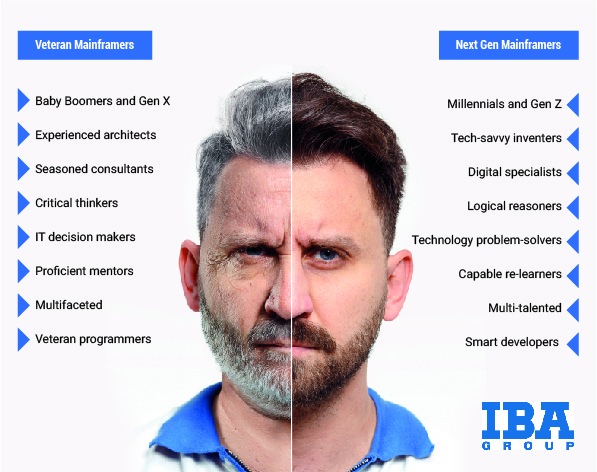3 Myths and Facts about Mainframers
Many people view mainframes as a legacy technology that is becoming obsolete in the age of cloud computing.
Based on this inaccurate assumption, mainframers – computer engineers who develop, programme and support mainframe systems – are often considered a dying breed of IT professional.
The truth is that many companies worldwide still rely on mainframe technology. In fact, 90 percent of Fortune 500 companies currently run core systems on mainframes.
This is due to the superior security and input and output operational capabilities that mainframes offer. Mainframes are particularly well suited for transactional applications.
As such, maintaining safe and secure mainframe environments remains a vital and sought-after job role. Yet, skills remain scarce. And the misconceptions that continue to plague the sector exacerbate these challenges. In this blog post, we attempt to separate the myths from the facts and reveals the true nature of contemporary mainframers.
Myth 1: Mainframers are generally older people, about to retire
Fact: Many mainframers fall within the Baby Boomer demographic cohort. While these workers, born between 1946 and 1964, are reaching retirement age, mature mainframers are here to stay. In most cases they have learnt to adapt and reinvent themselves to keep pace with technological changes. They now work alongside a new generation of younger, tech-savvy Millennial and Generation Z mainframers.
Organisations such as IBM and IBA have invested to identify talent and attract and train younger mainframe developers and engineers. In fact, this is evident in IBA’s technical support teams, which consist of over 400 mainframe gurus. These mainframe teams comprise a mix of ages. Experienced older professionals provide on-the-job training and mentorship to the next generation of mainframers. This ensures younger professionals are ready to fill the gaps left while the industry’s older generation become seasoned consultants.
Myth 2: Mainframers are boring and methodical
Fact: The Baby Boomers who dominate the traditional mainframer community have a strong work ethic. They are also goal-oriented and defined by long-service, 9 to 5 jobs as organisational employees. Years of on-the-job and in the data centre experience have made them astute veterans of the industry. But as the number of programming languages grew, a new breed of developer has emerged.
Young IT professionals are passionate about data science, coding and problem-solving. Many of these young, talented and adaptable professionals have grown up programming on open-source operating systems. They now want to leverage these skills by developing solutions on the world’s most powerful hardware – mainframes.
Next-gen mainframers now combine logic with creative thinking and innovation. This is evident in the various ways they apply their technical skills to mainframe development.
Myth 3: Mainframers are introvert individuals who sit in dark corners
Fact: Today’s mainframers consist of collaborative multifaceted, multi-talented IT teams. The cross-generational nature of mainframe developer teams requires open communication. A collaborative mindset is also vital to success.
The need to transfer intellectual property and experience requires a culture of mentorship and continuous learning. Introversion has no place within modern mainframe developer teams. Instead, open-mindedness and tolerance have become the required attributes, as teams work to accommodate generational idiosyncrasies. This is vital to ensure that new approaches and methodologies can emerge and flourish.
Check back to this website for other informative blog posts. They cover the evolving and dynamic mainframe sector, and the people and technologies that continue to drive it forward.
